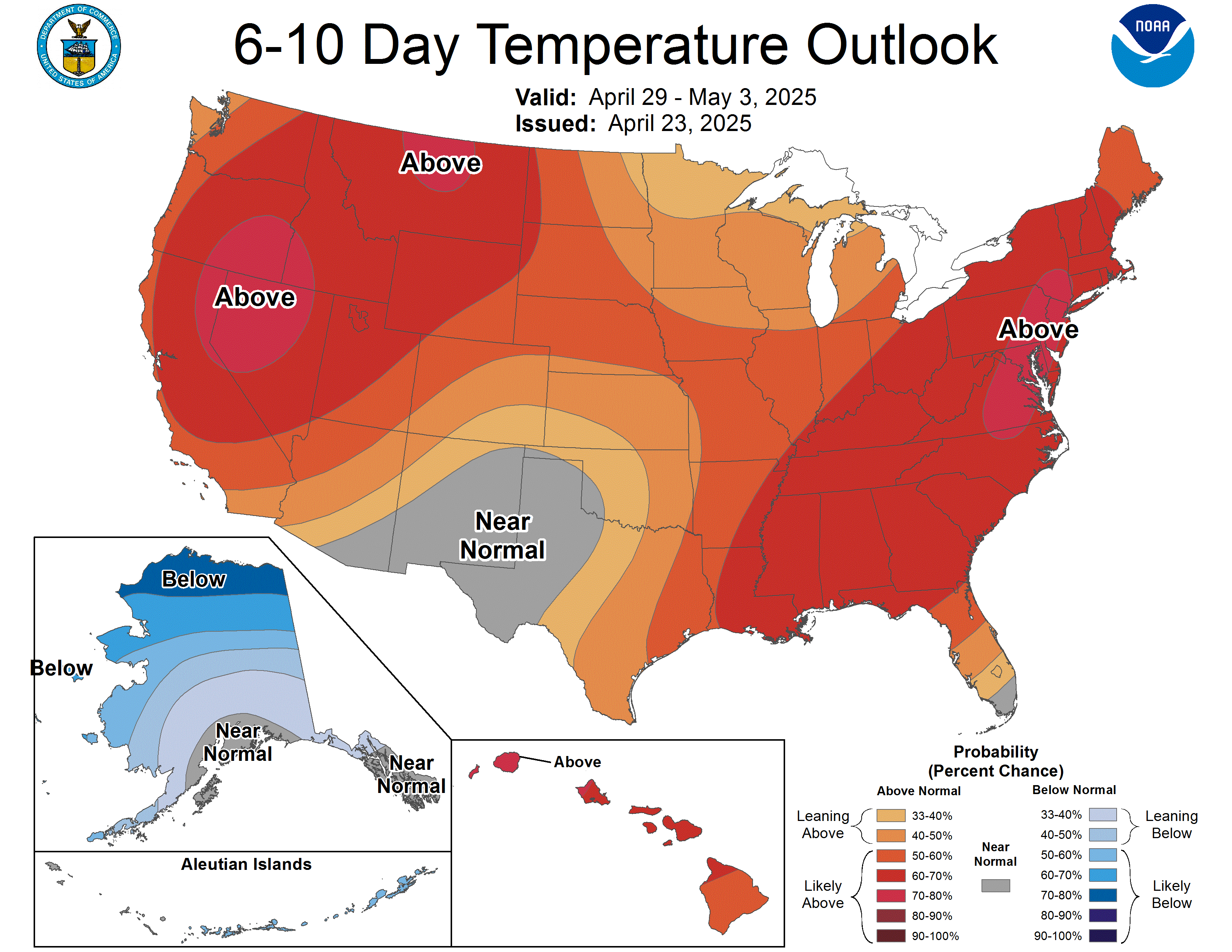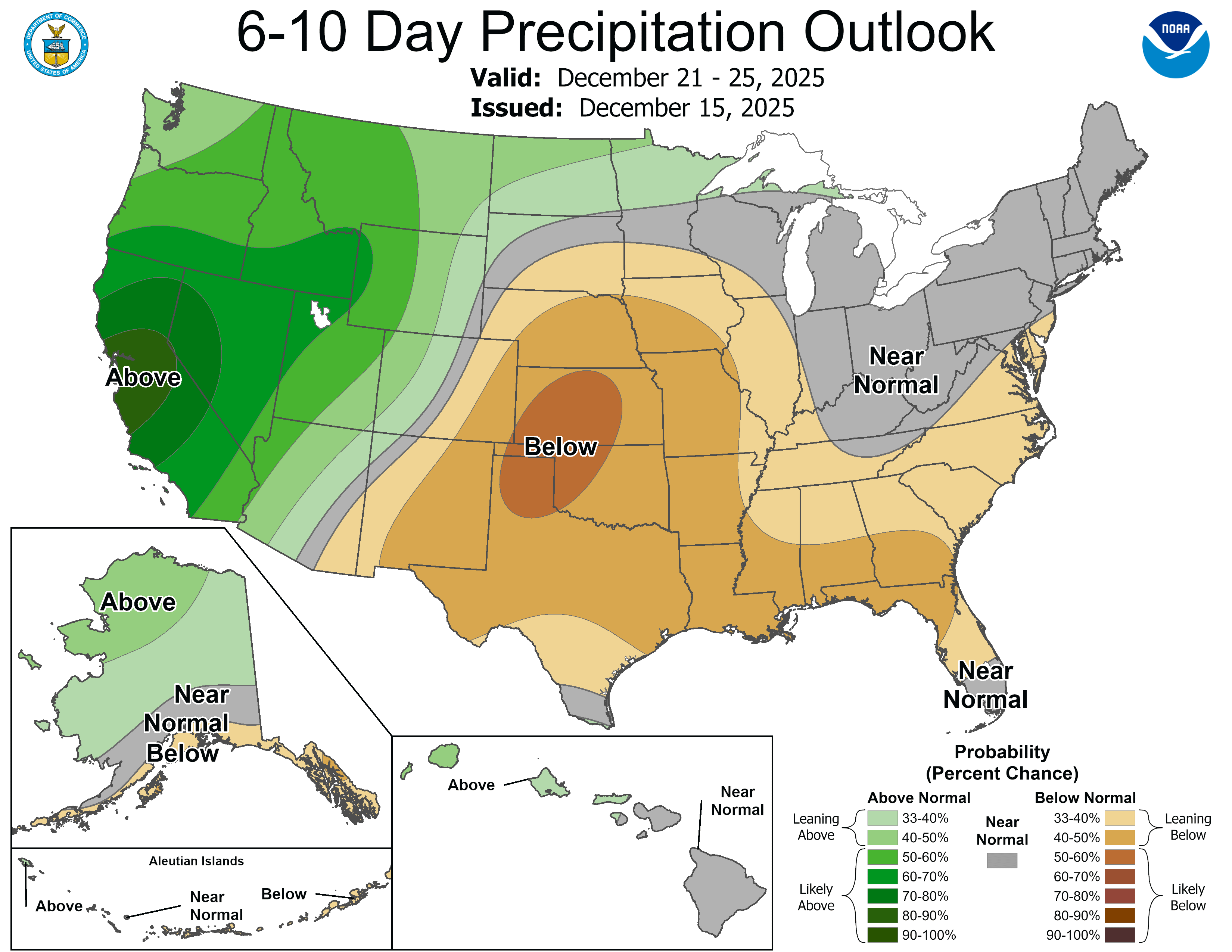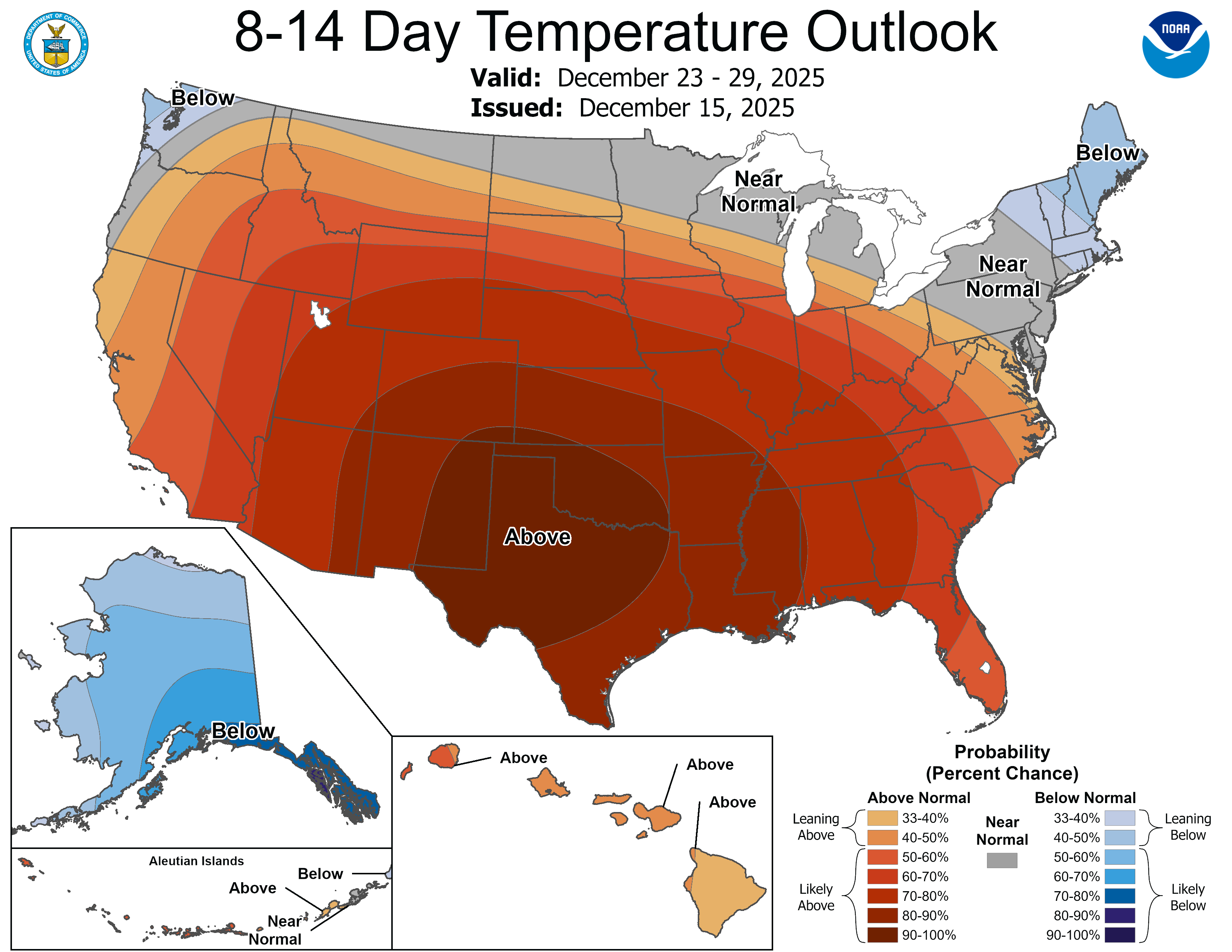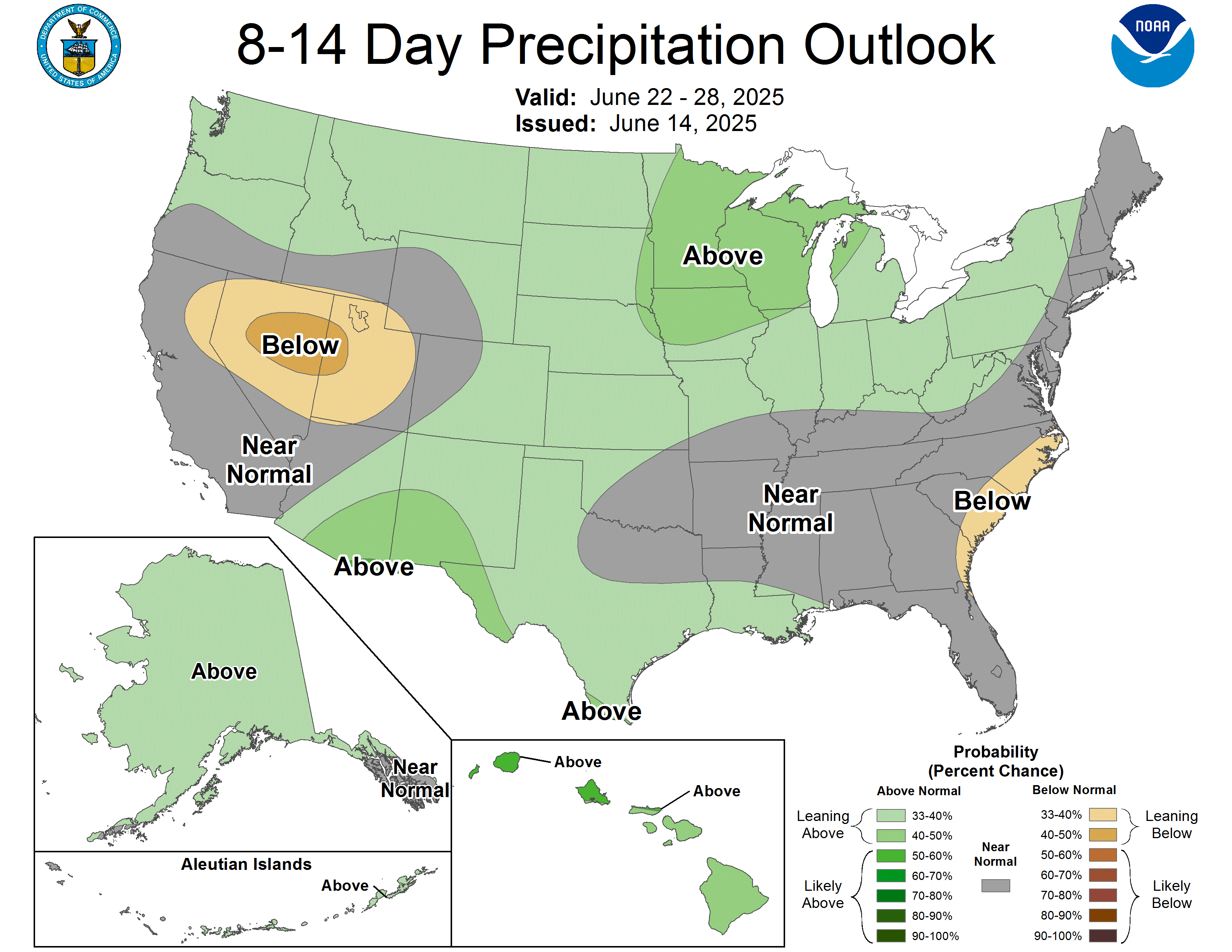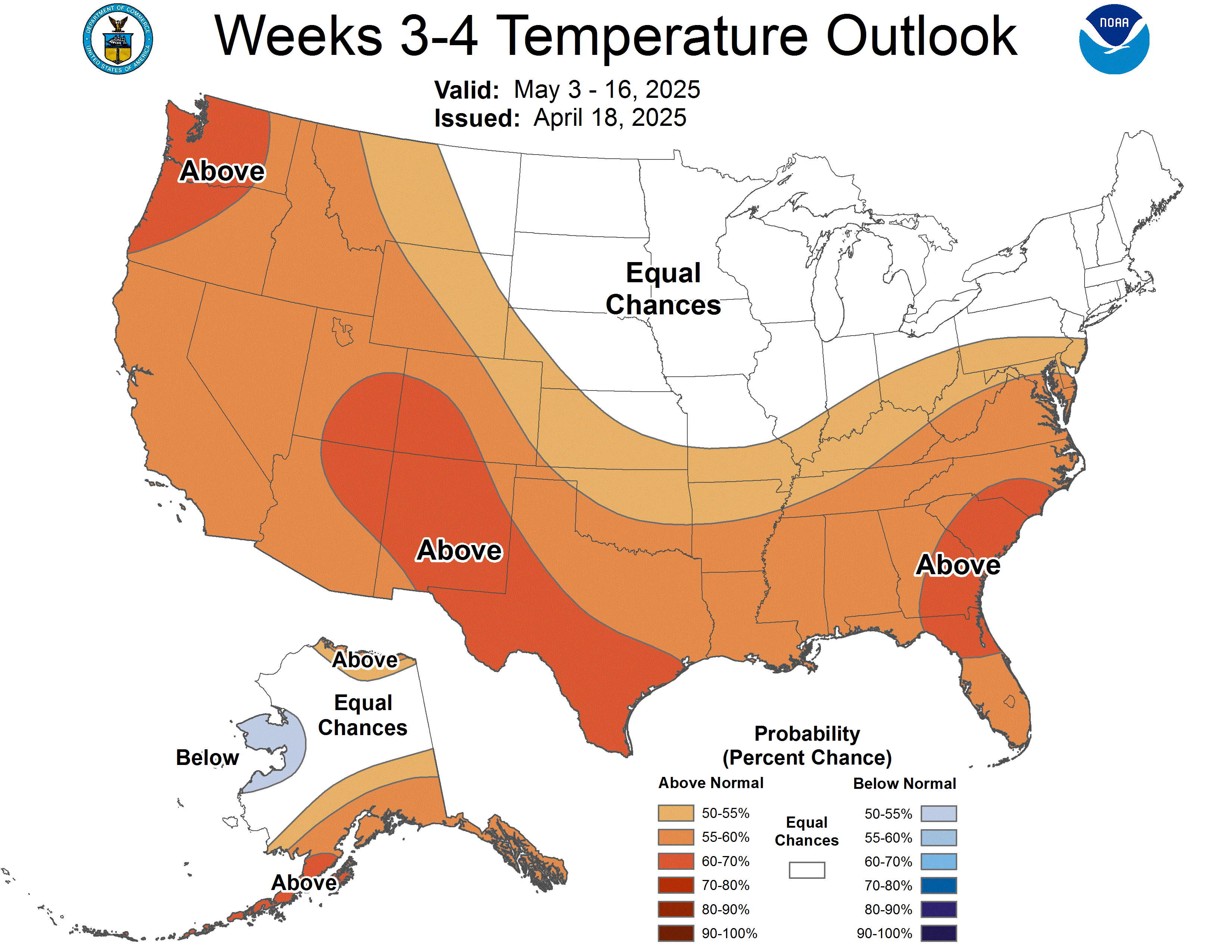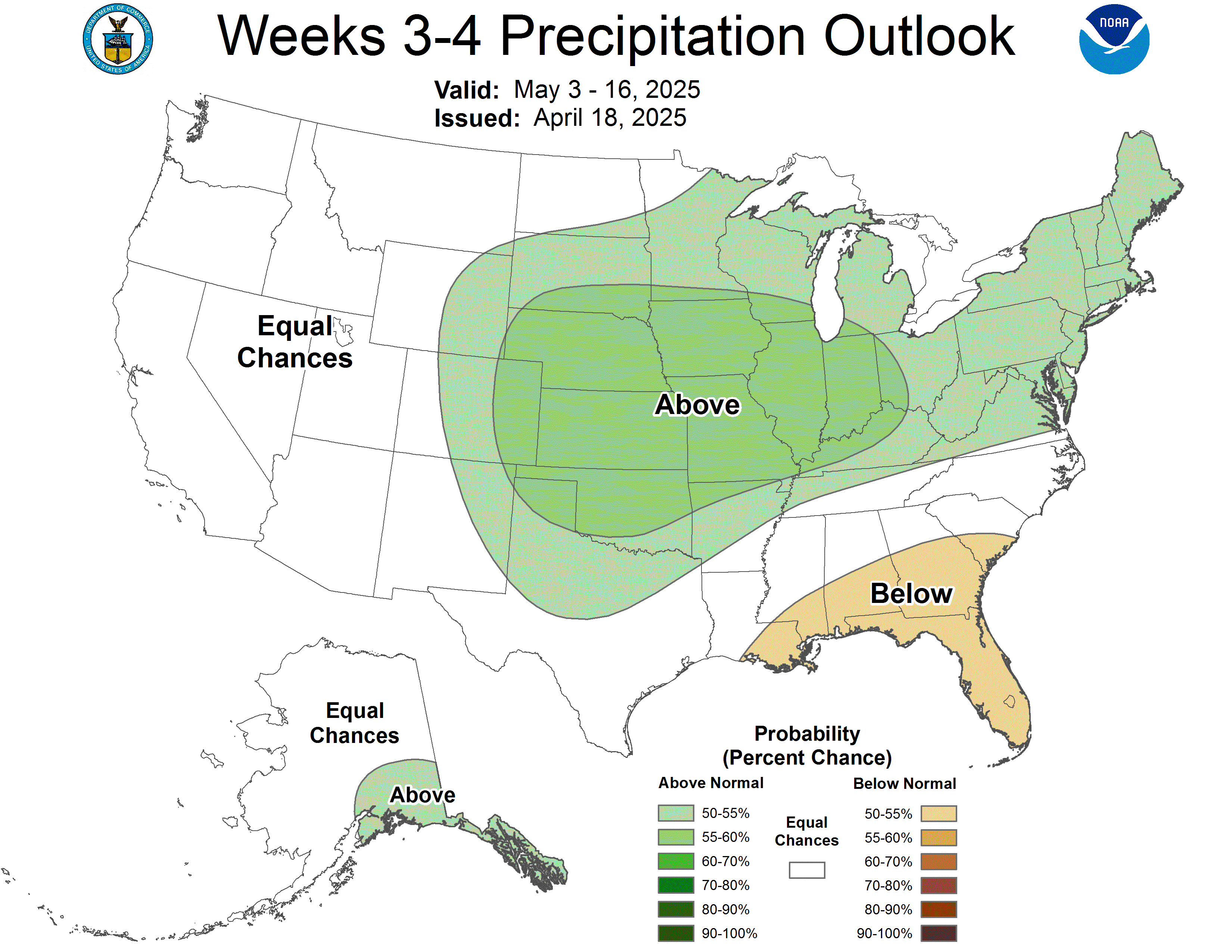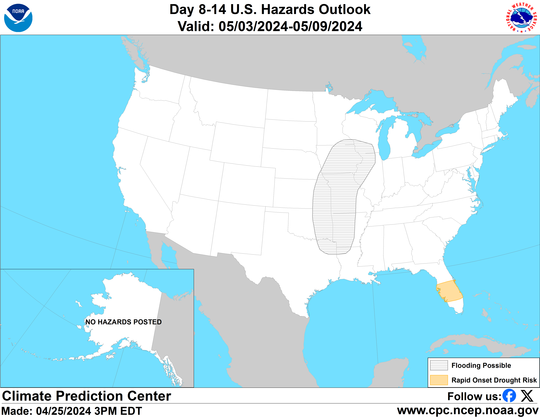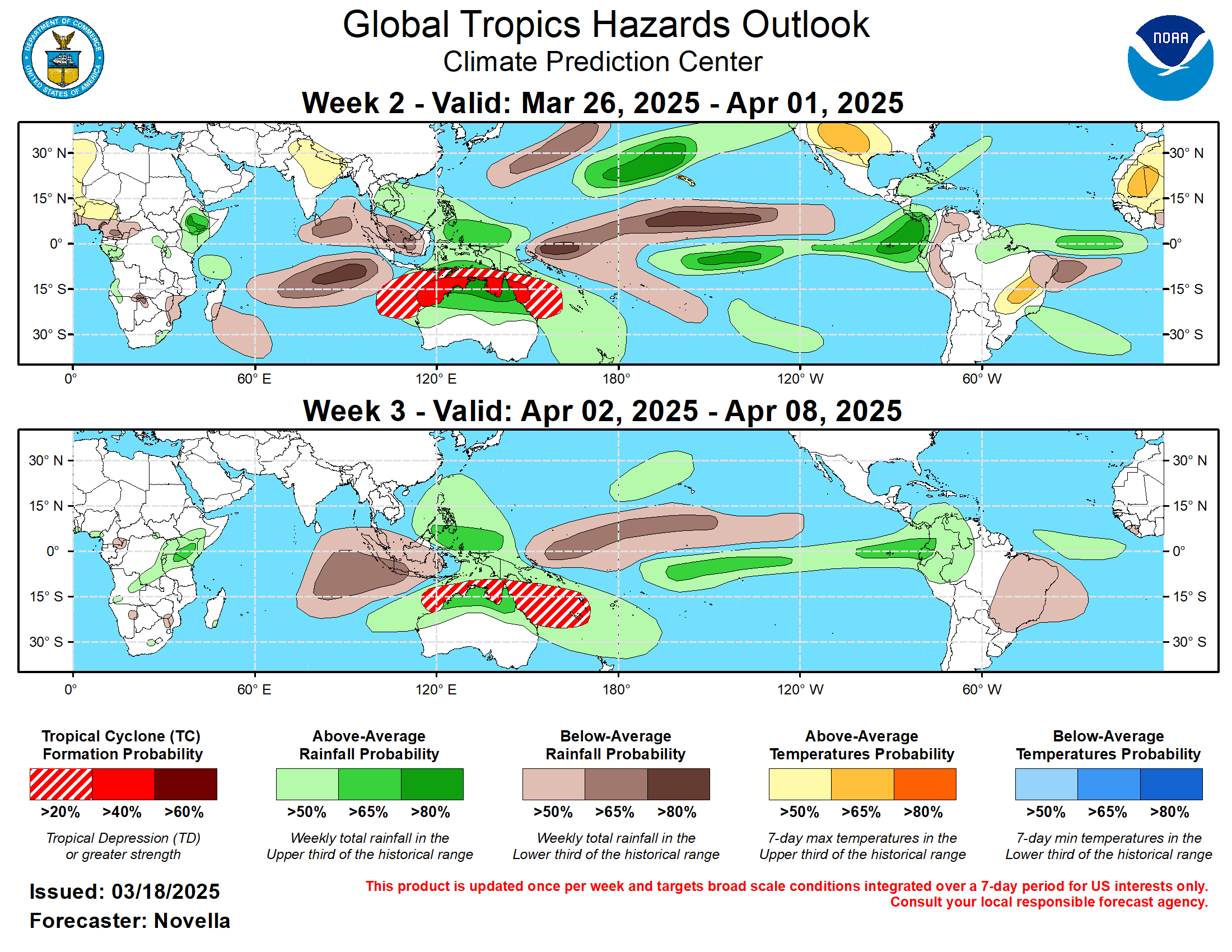This article focuses on what we are paying attention to in the next 48 to 72 hours. The article also includes weather maps for longer-term U.S. outlooks (up to four weeks) and a six-day World weather outlook which can be very useful for travelers.
First the NWS Short Range Forecast. The afternoon NWS text update can be found here after about 4 p.m. New York time but it is unlikely to have changed very much from the morning update. The images in this article automatically update.
Short Range Forecast Discussion
NWS Weather Prediction Center College Park MD
Mon Feb 03 2025
Valid 12Z Mon Feb 03 2025 – 12Z Wed Feb 05 2025…Unsettled weather to persist across the Northwest U.S. into early next
week with much colder temperatures and heavy snowfall across the Cascades,
northern Great Basin, northern Rockies and northern High Plains……Strong atmospheric river will continue over the next couple of days
across northern and central California with heavy rains and areas of
flooding likely……Storm system crossing the Great Lakes region to bring accumulating
snowfall to parts of the Northeast……Record high temperatures are expected across portions of the Southwest
out through the Southern Plains through the middle of the week…A persistent trough of low pressure and associated closed low will
continue to impact the Pacific Northwest and the northern Rockies going
through the first half of the week ahead with widespread unsettled weather
expected. Moist onshore flow into the higher terrain coupled with colder
temperatures filtering south from southwest Canada will drive heavy
accumulating snowfall across the Cascades and especially interior mountain
ranges such as the Sawtooth, Bitterroots, Tetons and Absaroka Range. In
fact, the strong atmospheric river that is bringing very heavy rainfall to
areas of northern California is being steered up the larger scale pattern
northeastward up across areas of southern and eastern Oregon, and into the
southwest facing slopes of the northern Rockies where there is plenty of
cold air in place for very heavy snowfall accumulations and including even
some lower elevation locations. For the Cascades, generally an additional
6 to 12 inches of snow is expected through early Wednesday, but
considerably heavier amounts are expected for the Shasta/Siskiyou Ranges
northeastward into the aforementioned terrain of the northern Rockies
where an additional 1 to 3+ feet can be expected. The deep layer fetch of
Pacific moisture is also overrunning Arctic air that is well entrenched
over the northern High Plains, and this coupled with upslope flow here
just east of the Continental Divide will allow for heavy snowfall to
accumulate here as well.The strong atmospheric river bringing the heavy flooding rain concerns
over northern California should persist through the first part of the week
as a stationary front remains anchored in place. Multiple waves of low
pressure will traverse this boundary, and this coupled with the Pacific
moisture transport and upslope flow/forcing over the higher terrain of the
coastal ranges and northern Sierra Nevada foothills should yield as much
as an additional 5 to 10 inches of rain. The Weather Prediction Center has
depicted a Slight Risk (level 2 of 4) of excessive rainfall across
northern California going through early Tuesday. By later Tuesday and
Wednesday, the front will be finally settling southward, but this will
bring heavy rainfall down into central California including the Bay Area
and portions of the Central Valley. Several inches of new rain can be
expected here, and a Slight Risk of excessive rainfall has been depicted
going into early Wednesday.Farther off to the east, a combination of Pacific moisture arriving from
the Western U.S. along with a frontal system traversing the Great Lakes
region will bring a swath of accumulating snow for today across areas of
Wisconsin and Michigan eastward into northern New York and northern New
England. Locally several inches of new snow accumulation is expected. This
system will pull away through southeast Canada tonight with a trailing
cold front then crossing the region and bringing a new surge of much
colder temperatures.Arctic high pressure will be settling south from Canada across much of the
northern tier of the nation early this week with temperatures falling
locally well below normal. This will especially be the case over the
northern High Plains where temperatures will be as much as 15 to 30
degrees below normal, with daytime highs locally staying below zero.
However, south of the Arctic front going through the middle of the week,
very warm temperatures will be pooled across much of the southern tier of
the country. This will include temperatures reaching well into the 80s
across the interior of the Southwest and also across the southern Plains.
Record high temperatures are expected with some locations seeing high
temperatures as much as 20 to 30 degrees above normal.
To get your local forecast plus active alerts and warnings click HERE and enter your city, state or zip code. If the Hazards Outlook is not updated click here but remember it does not update during the weekend.
Learn about wave patterns HERE.
Then, looking at the world and of course, the U.S. shows here also. Today we are looking at precipitation.
Please click on “Read More” below to access the full Daily Report issued today.
| Notices: What would you like to learn about? Please provide that to me via the comment section at the end of the article. |
Now more detail on the 48-Hour Forecast (It is a 48 to 72 Hour Forecast actually)
Daily weather maps. The Day 1 map updates twice a day and the Day 2 and 3 maps update only once a day. These maps update automatically. But if that does not happen, you can get updates by clicking HERE
TODAY (or late in the day the evening/overnight map will appear) (Key to surface fronts shown on maps and you will then also be able to insert a city name or zip code and get a local NWS forecast).
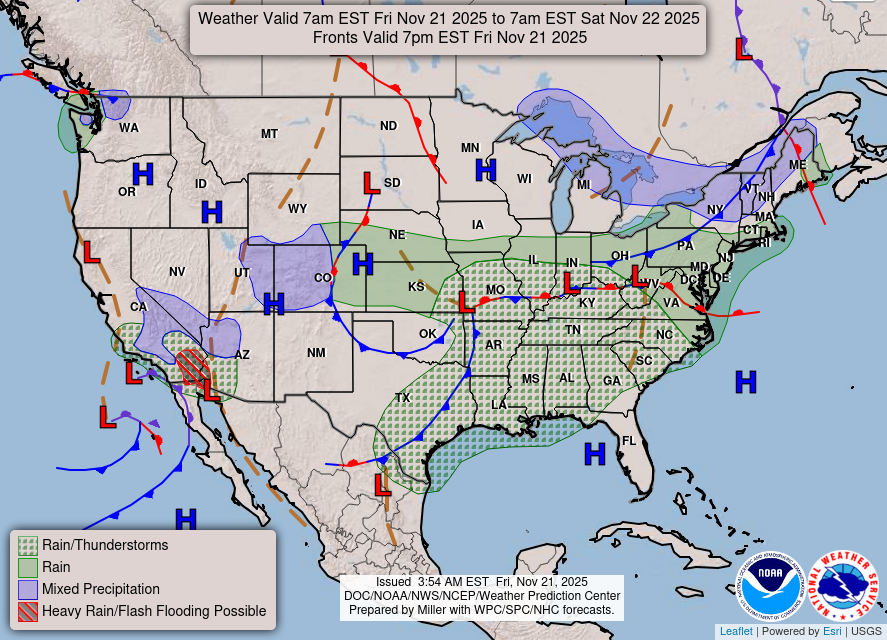
TOMORROW
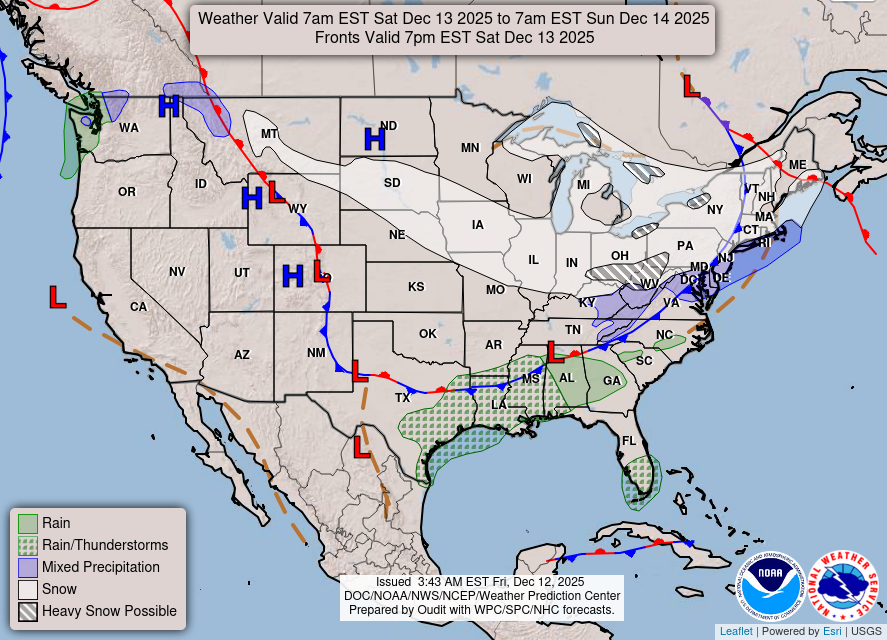
NEXT DAY
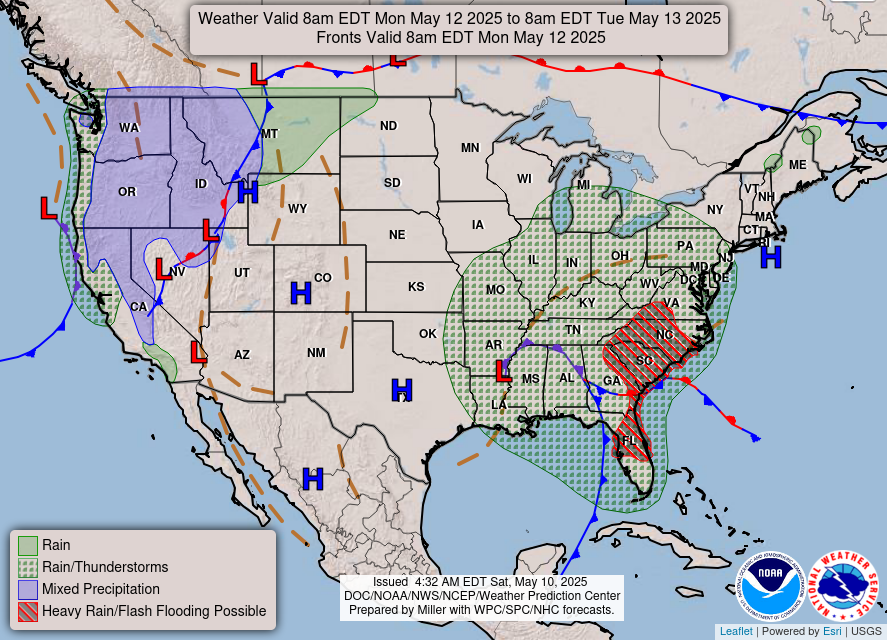
We have a new animation of the forecast which shows how things may play out over the next 60 hours. To update click ANIMATION. Doing so will get you to the dashboard. You can then step through the animation or hit LOOP on the upper right of the display. You will have to hit the back arrow ← at the top left on your computer to get back into this article. It is a little more trouble than before but I think NOAA scrapped the animation routine I was using so we have to keep up with “progress”.
The NWS Climate Prediction Center’s: Watches, Warnings, and Advisories plus other information can be found HERE. That takes you to the NWC Severe Weather Site. From there you can select among many categories of information. Remember to hit the back arrow ← at the top left of your screen to return to this article.
ATMOSPHERIC RIVERS
This tells us what is approaching the West Coast. Click HERE to update If I have not gotten around to doing the update. Here is some useful information about Atmospheric Rivers.

Below is the current five-day cumulative forecast of precipitation (Updates can be found HERE)
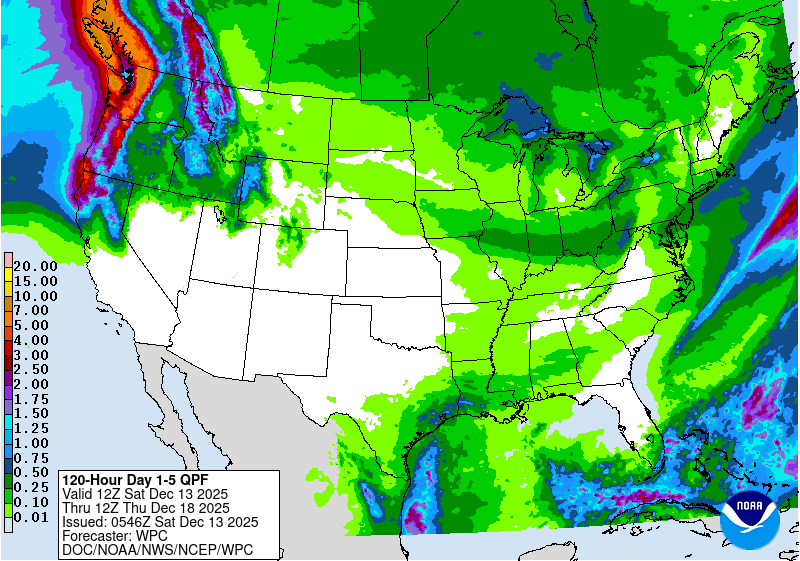
Ski SnowReports
New Feature – Ski Reports. It is difficult to find reports that auto-update on-screen (and they are very long) but these links will get you to them – If you have additional suggestions make them in the comments section after every Econcurrents Article and we may add those links. We will try to not have too much overlap as that can add to the confusion.
Snow Forecasts. And remember this shows natural snow. Ski resorts also make their own snow.
Day 1
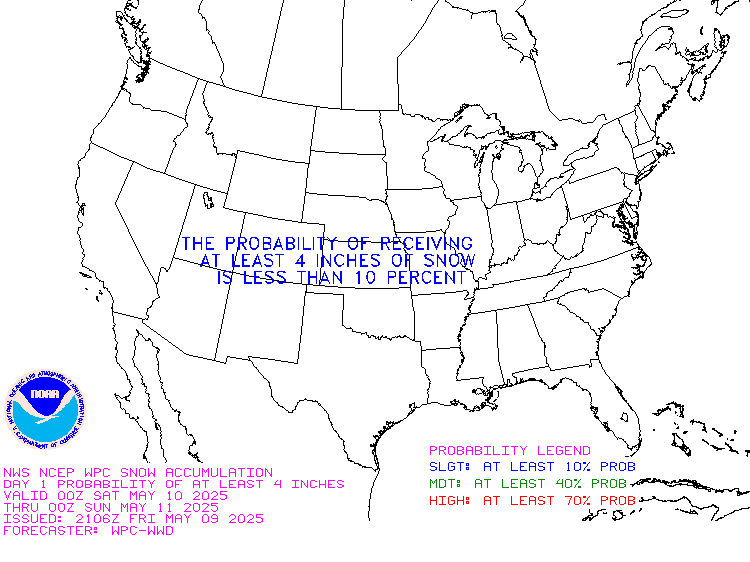
Day 2
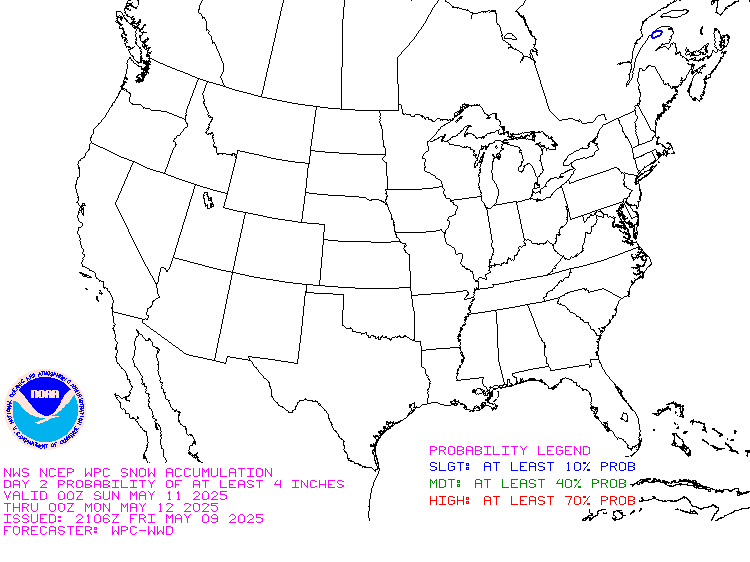
Now we look at Intermediate-Term “Outlook” maps for three time periods. Days 6 – 10, Days 8 – 14, and Weeks 3 and 4. An outlook differs from a forecast based on how NOAA uses these terms in that an “outlook” presents information as deviation from normal and the likelihood of these deviations.
Below are the links to obtain updates and additional information. They are particularly useful if you happen to be reading this article significantly later than when it was published. I always try to provide readers with the source of the information in my articles. These links may also be useful for those viewing this article on a cell phone or other small screen.
| Days 6 – 10 (shown in Row 1) | Days 8 – 14 (Shown in Row 2) | Weeks 3 and 4 (Shown in Row 3 but updates only on Fridays) |
| https://www.cpc.ncep.noaa. gov/products/predictions/610day/ | https://www.cpc.ncep .noaa.gov/products/predictions/814day/ | https://www.cpc.ncep.noaa.gov/products/predictions/WK34/ |
Showing the actual maps. They should now update automatically. The Week 3 – 4 Outlook only updates on Fridays. So below is what I call the Intermediate-term outlook. On Fridays, it extends out 28 Days. That declines day by day so on Thursday it only looks out 22 days until the next day when the Week 3 – 4 Outlook is updated and this extends the outlook by one additional week.
| 6–
10
|
|
|
| 8–
14 |
|
|
| 3–
4 |
|
|
HAZARDS OUTLOOKS
Click here for the latest complete Day 3 -7 Hazards forecast which updates only on weekdays. Once a week probably Monday or Tuesday I will update the images. I provided the link for readers to get daily updates on weekdays. Use your own judgment to decide if you need to update these images. I update almost all the images Friday Night for the weekend edition of this Weather Report. So normally readers do not need to update these images but if the weather is changing quickly you may want to.
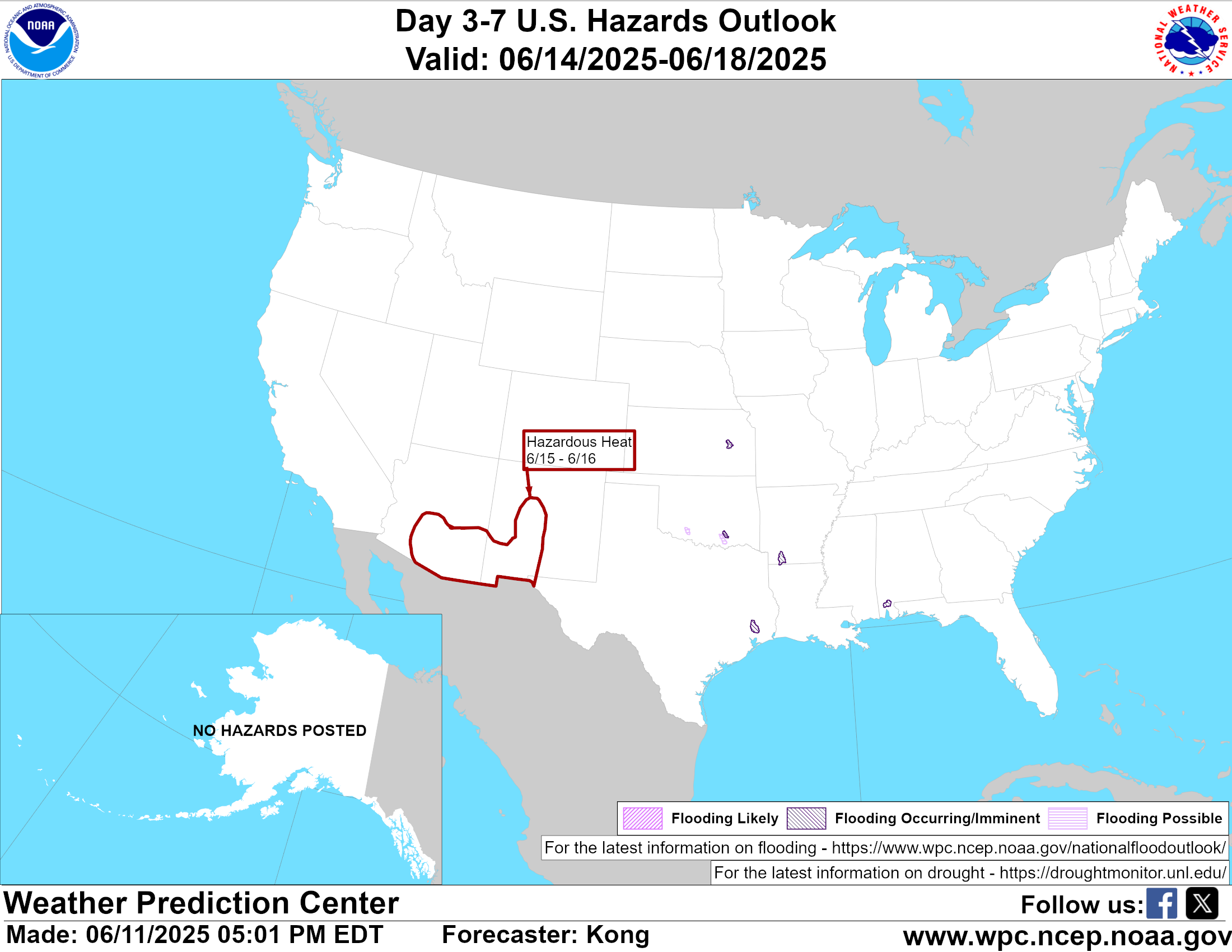
Temperature month to date can be found at https://hprcc.unl.edu/products/maps/acis/MonthTDeptUS.png
Precipitation month to date can be found at https://hprcc.unl.edu/products/maps/acis /MonthPNormUS.png
World Forecast [that website is has been intermittent so be patient]
Below are the Day 1 -3 and 4-6 forecasts for temperature and precipitation. Updates and much additional information can be obtained HERE
World Temperature Anomalies

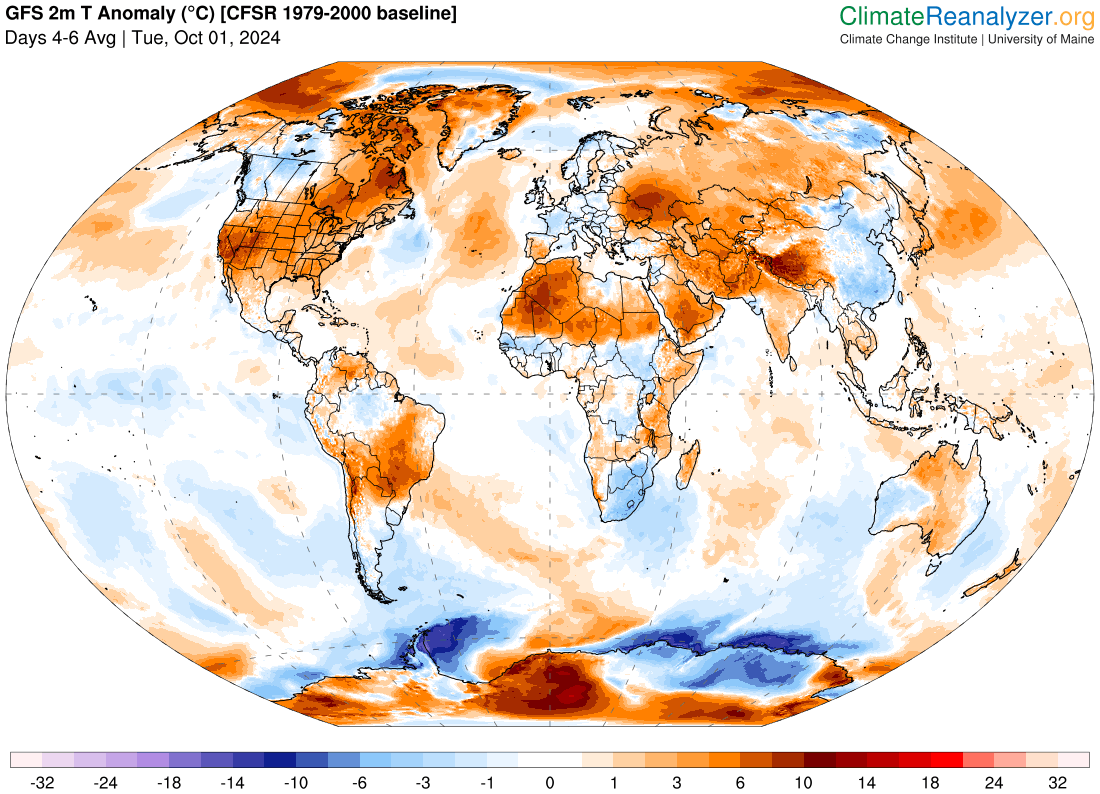
World Accumulated Precipitation
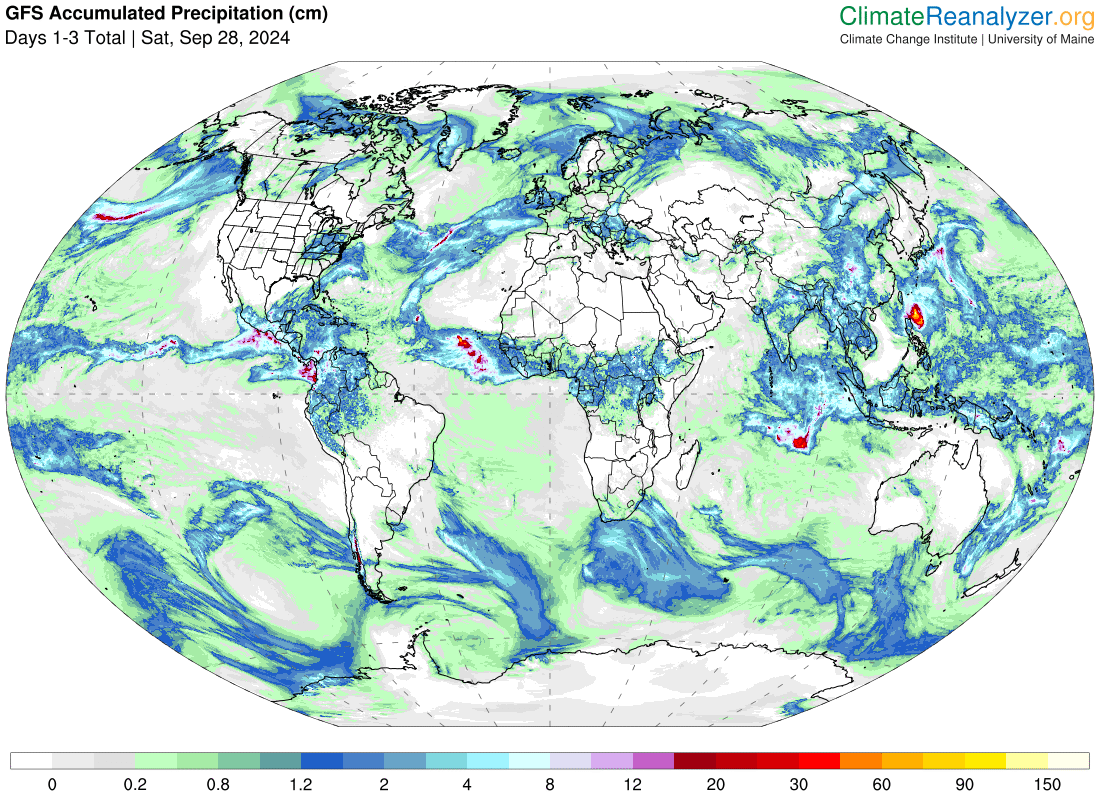
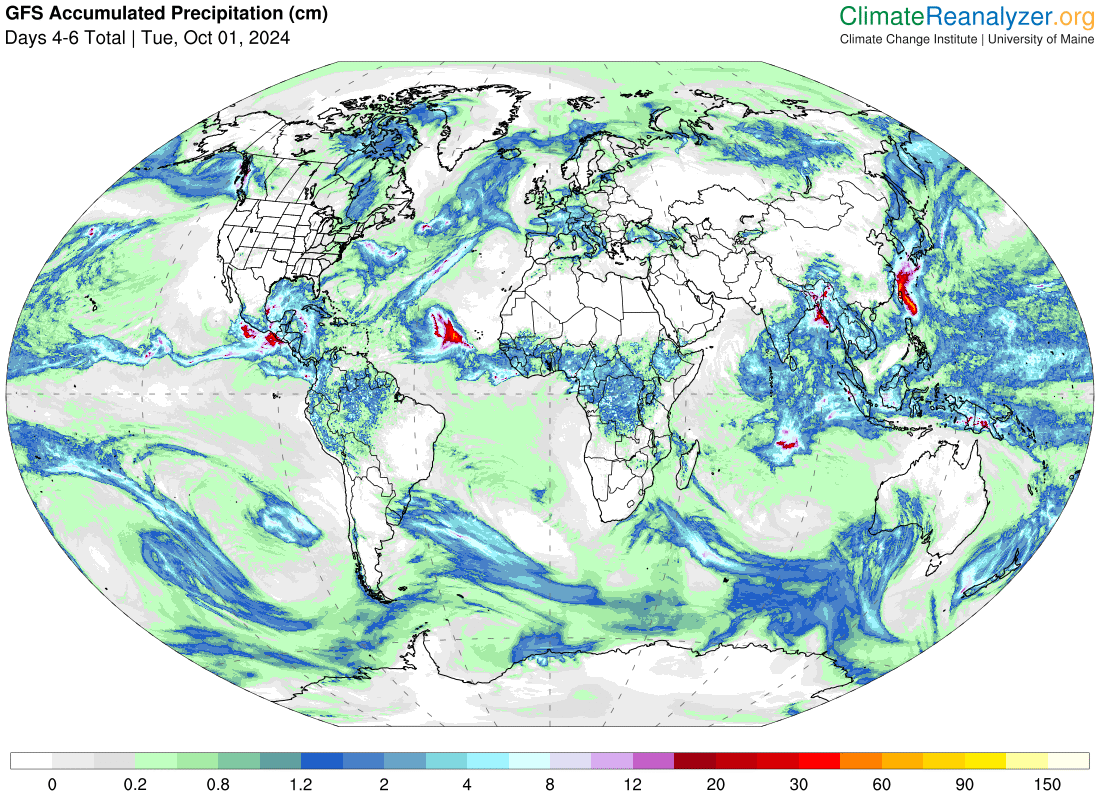
This information is provided by the University of Maine. They draw upon many different sources. There is a lot of information available at the link provided. I have just provided two useful forecasts. There are probably over a hundred different forecasts available from this source.
Worldwide Tropical Forecast (This is a NOAA Product)
This graphic updates on Tuesdays) If it has not been updated, you can get the update by clicking here Readers will only have to do that if they are reading this article much later than the date of it being published.
Information on Tropical Storms can be found HERE. Western Pacific information can be found HERE. Note that unless there is an out-of-season storm the below images will not update until the National Hurricane Center starts their seasonal update of these maps on June 1. I include them simply because there can be an out-of-season event in which case it should show up in these maps.
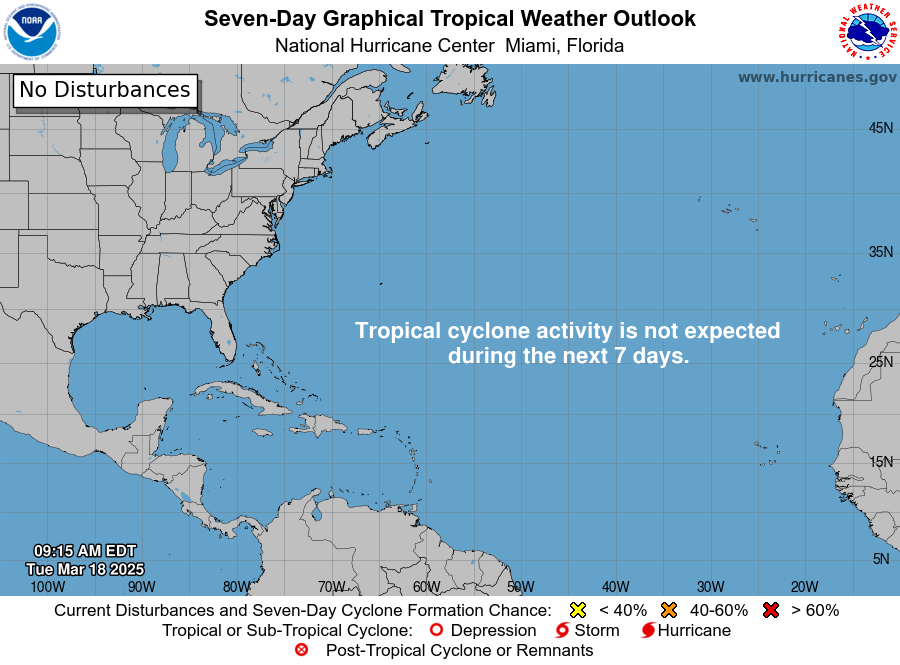
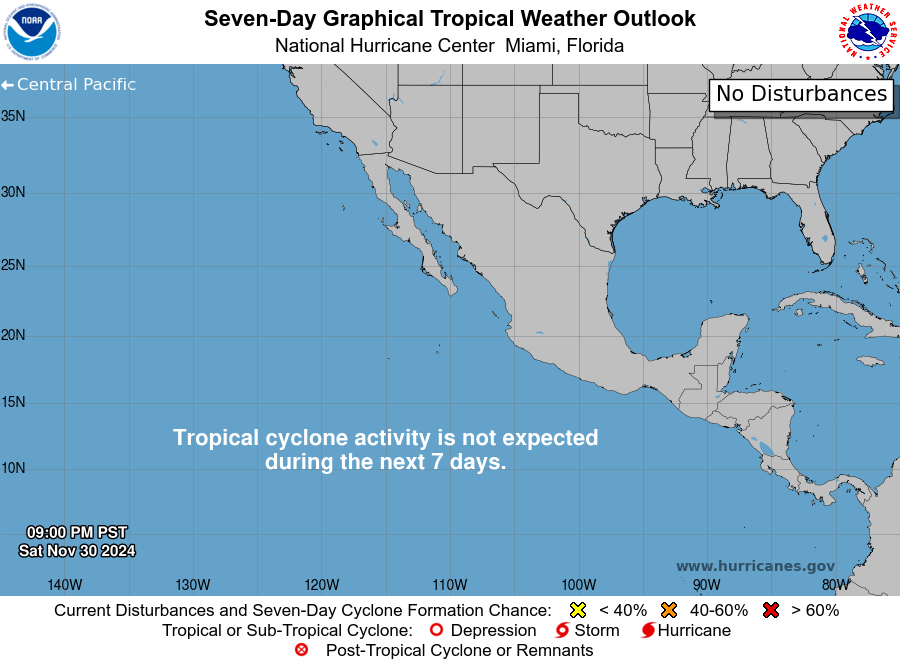
–
| I hope you found this article interesting and useful. |

